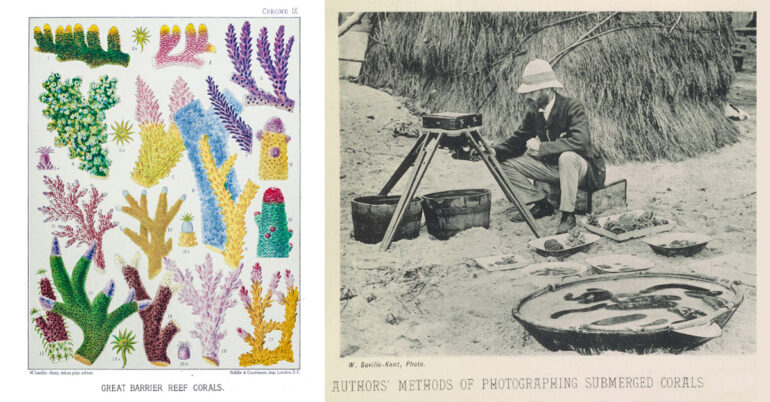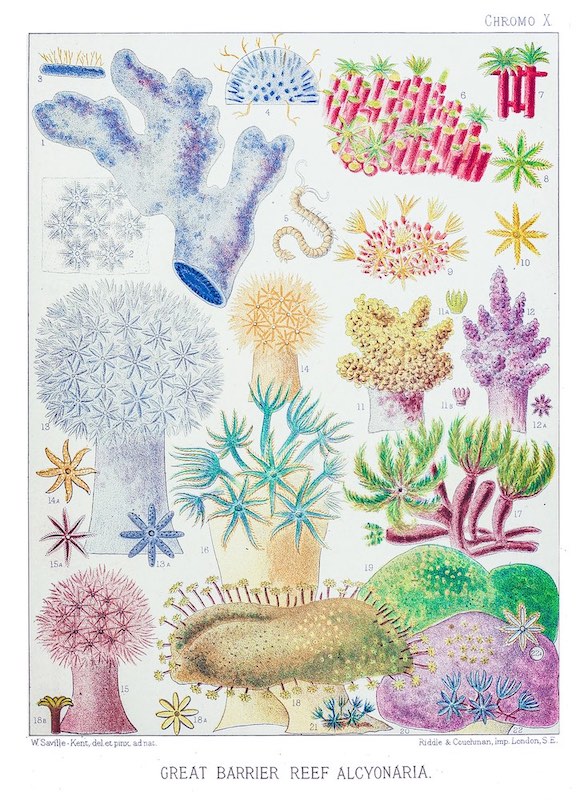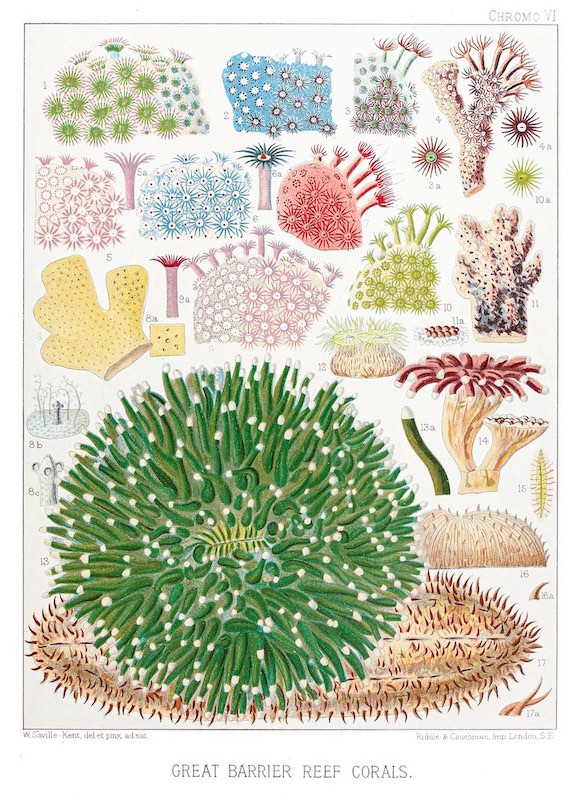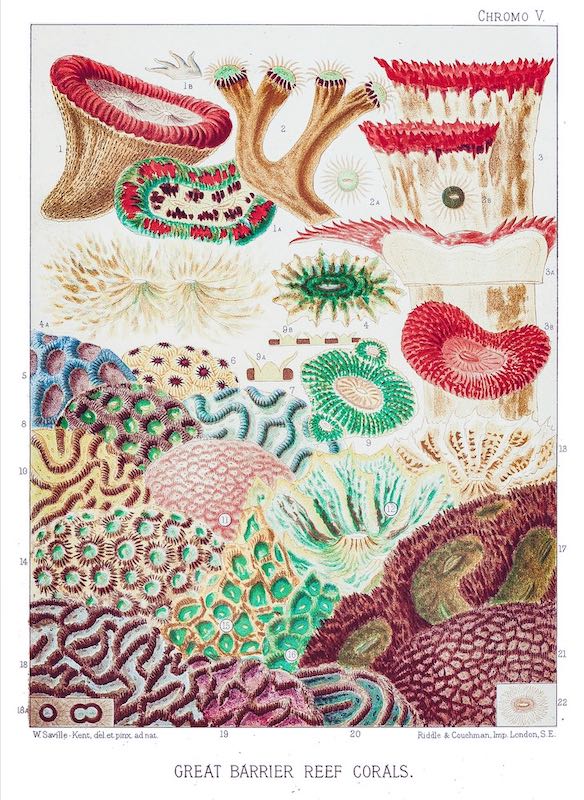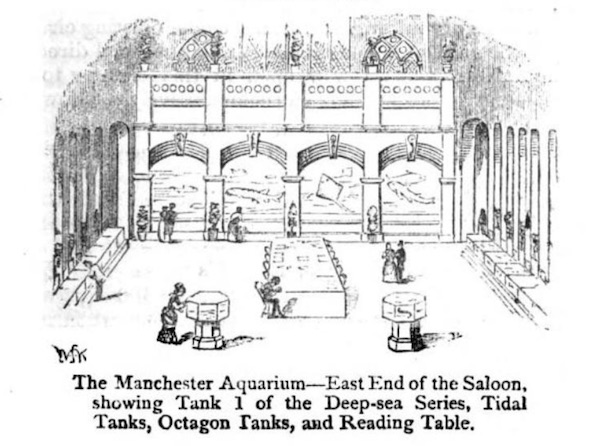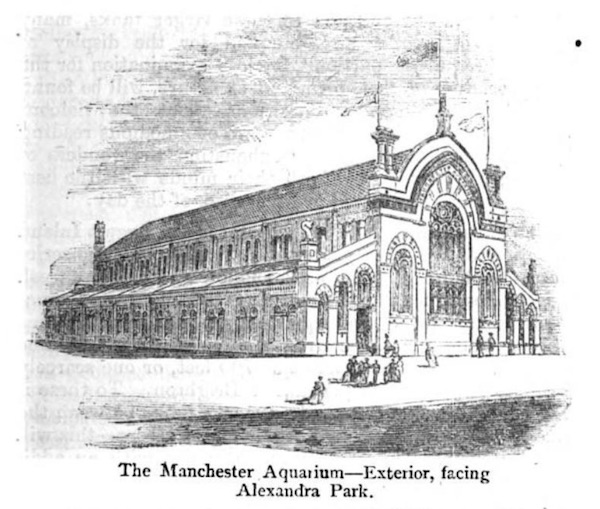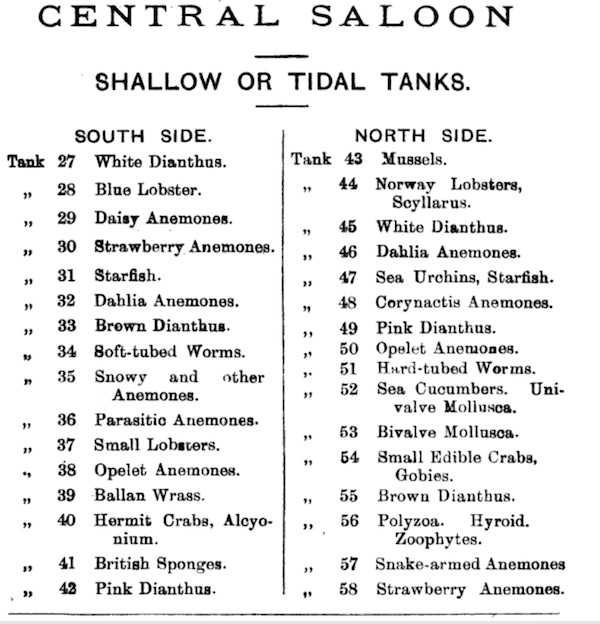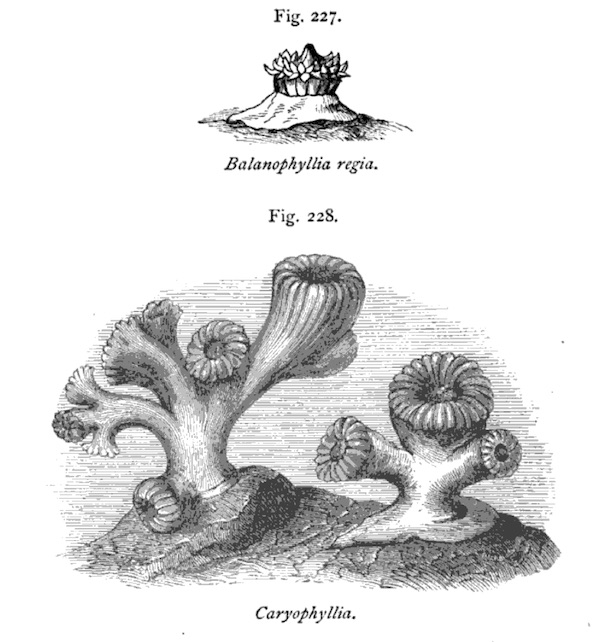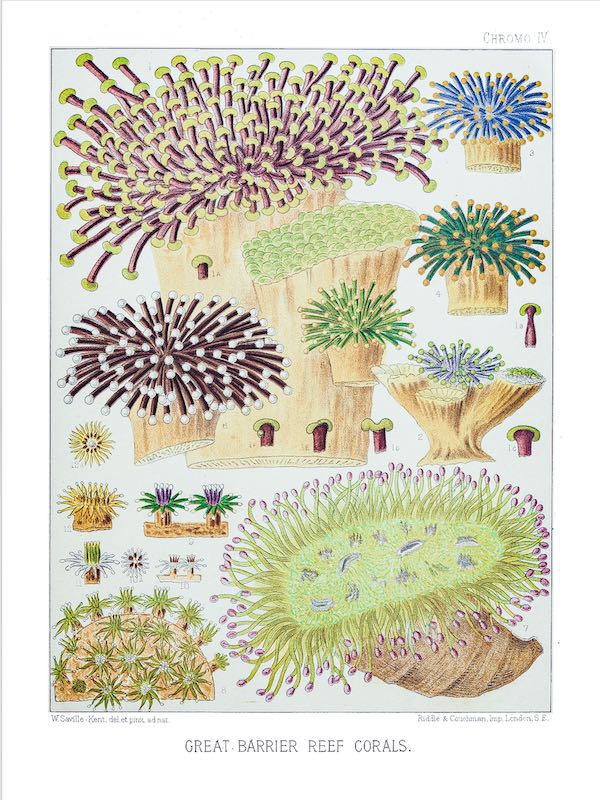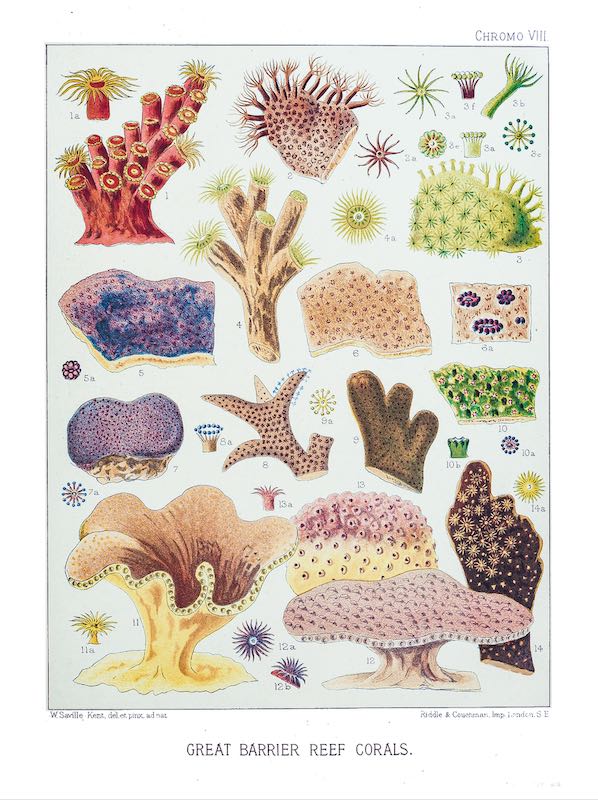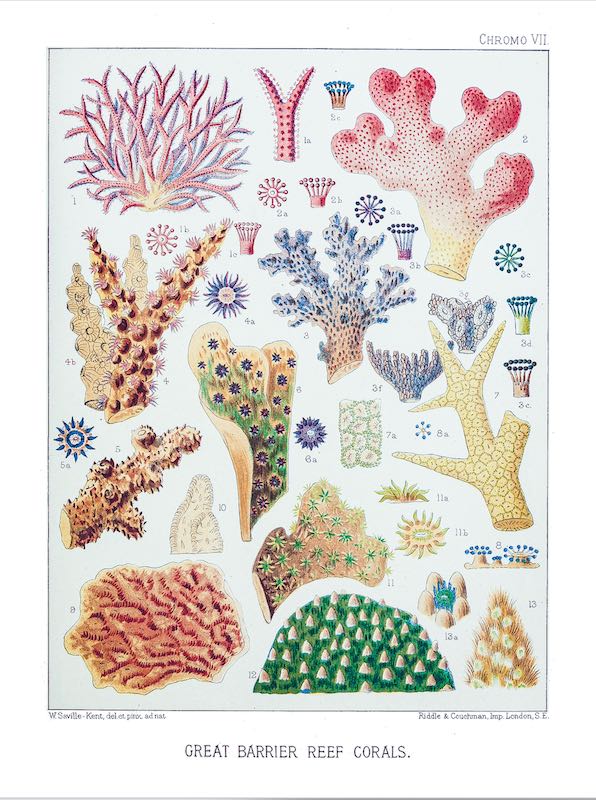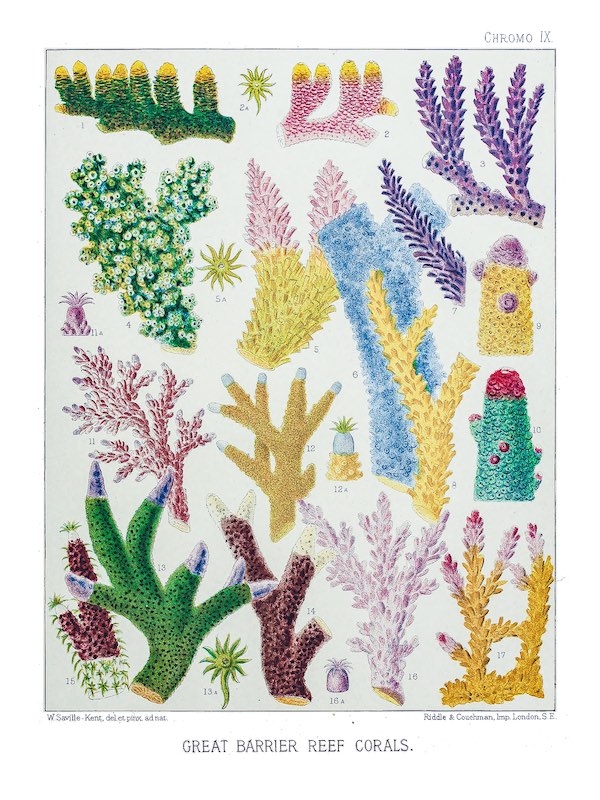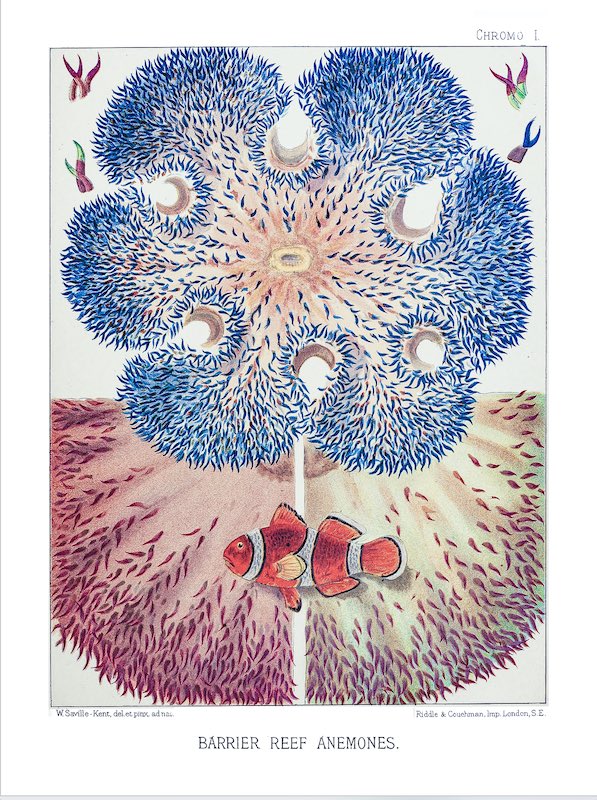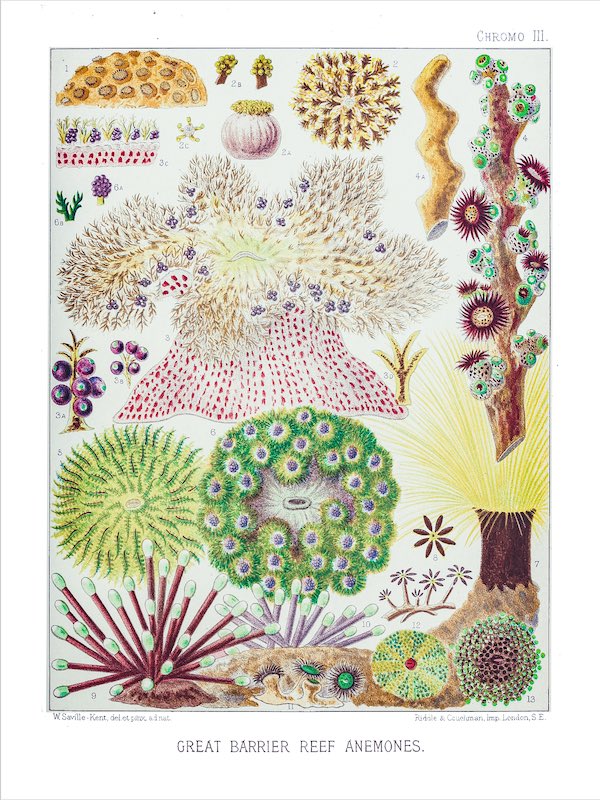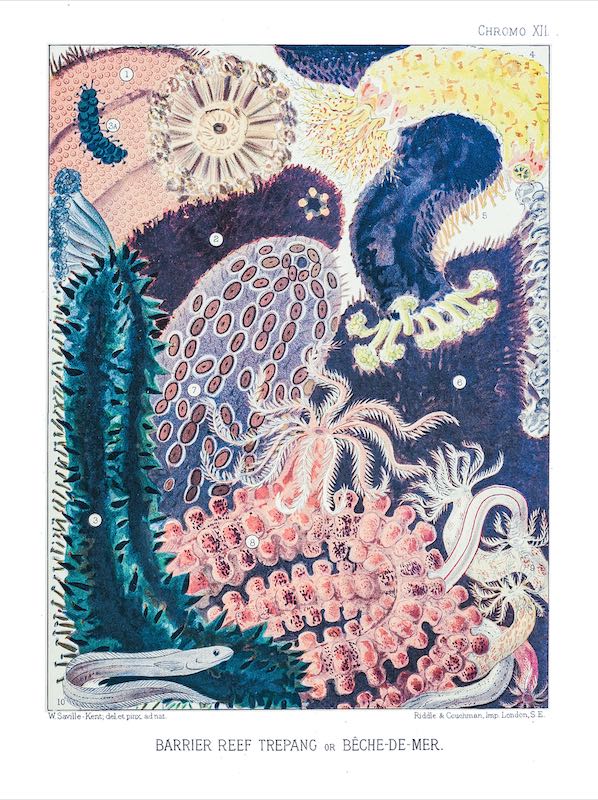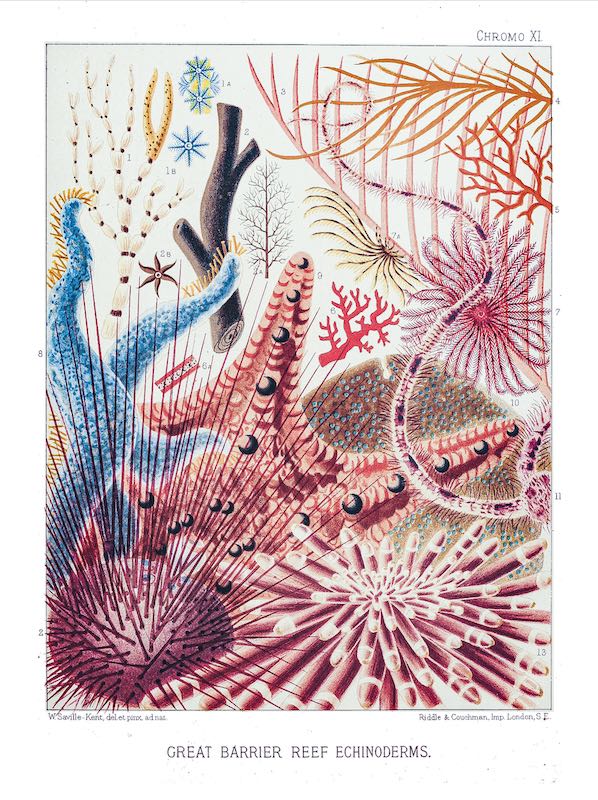William Saville-Kent
As you do when you’re stuck at home, you fall down a rabbit hole on the internet. The story of William Saville-Kent is one such divot we stumbled upon, and oh boy are we happy we did.
We can only describe him as being the world’s first coral loving naturalist to inspire millions to see the reef with new eyes. William brought corals to life with his vibrant depiction of the Great Barrier Reef Corals with 16 beautiful colored lithographs and led a fascinating life surrounded by marine life.
And while his beautiful coral illustrations in vivid tint were my gateway into the life of Saville-Kent, as we kept reading, the rabbit hole soon turned into a cavern. Much of William’s story is relatable to the work we’ve been doing today to share stories and images about corals, and with tons of old books and journal publications searchable through Google, the more we discovered the deeper we dove.
Aquaria
Saville-Kent started his career in 1866 arranging coral skeletons in the Natural History Department of the British Museum. He would spend his days dreaming of seeing the grey organisms in front of him “in their native seas and wonderful living tints.”
William was a coral loving naturalist from the late 1800s, (how cool!) who among other equally fascinating professions, worked at various public aquariums around England. He left his position at the museum in 1873 to become a resident naturalist first in Brighton Aquarium, then Manchester, and finally London.
During this period public aquariums were becoming increasingly popular. In 1871 for example the Crystal Palace Aquarium was briefly the largest saltwater public aquarium in the world holding 120,000 gallons of seawater. You can start to see how this rabbit hole was quickly becoming a rabbit cavern.
In his time, the aquaria around Saville-Kent contained Sea Anemones and lots of them! But also many marine species common to the Mediterranean sea. NPS Corals like Belanophyllia and Caryophyllia were housed in the Crystal Palace Aquarium, including various forms of sea fans, gorgonians, soft corals, and zoanthids.
Just the history of saltwater aquarium in itself is enough to keep you occupied and sure to provide a few good laughs. Start with Handbook to the Marine Aquarium 1854, Gosse, or The Aquarium: Its Inhabitants, Structure & Management 1876, Taylor. It is very interesting to get a glimpse into the important role of a public aquarium in educating the public, more than one hundred years ago.
Great Barrier Reef
William Saville-Kent was most famous for his book The Great Barrier Reef of Australia (1893), however we thought it interesting to include his connecting to the aquarium industry. He often cites his foundation in aquaria as being important, and how aquariums where important not only for public awareness but also scientific research.
In 1884, following a decade of aquarium work, he voyaged to the other side of the world and spent the next twenty years laying the foundations for fisheries development in Australia. He was particularly spellbound by the corals, polyps and other lifeforms on the Queensland coast, and he hoped his book The Great Barrier Reef of Australia would increase public awareness of the reef and its origins.
While stories and books about aquarium care in the victorian era lead me down some interesting paths, the true beauty and genius of Saville-Kents work culminated in his book.
Not only does it contain sixteen colorful replications of coral it also has numerous black and white photos. His documentation of the Great Barrier Reef was the first major publication utilizing photography for the illustration of marine specimens and drew worldwide attention.
There is so much we could write about him. In Australia he worked to develops oyster beds, report on fish, and bêche-de-mar, corals, sponges, dugong and turtles. Saville-Kent was a pioneer of the concept of sustainable fisheries. While at the Brighton Aquarium he witnessed a lobster lay eggs and charted the growth and development of the offspring. His goal was to see lobster and other commercial species of fish farmed as a sustainable resource.
What we love most about his book and his pictures are the life like colors, the inclusion of polyp details, and the artistic layout of the works. You can tell he spent years admiring these creatures. Just when you thought the cave was coming to an end, we got so excited with his art that we wanted to bring it all back to life.
As his work is now part of the public domain we started importing the images to lightroom, and bringing some of the original zest and vibrancy back to life. We printed out a few of the lithograph plates and quickly decorated the space around our own reef tank, and we’ve made all 16 images available as digital downloads.
It’s quite interesting that we are living in the future yet here we are always learning more about the past. Online resources like google allow you to travel back in time and picture an afternoon at the aquarium not so different than today. The Official Guide to the Manchester Aquarium would have been a compendium for visitors to read or to share far beyond the walls of the aquarium, to inspire a worldwide audience about the beauty of the underwater world.
Even today the beautiful works of William Saville-Kent continue to inspire, and raise awareness of the natural beauty of coral reefs.


